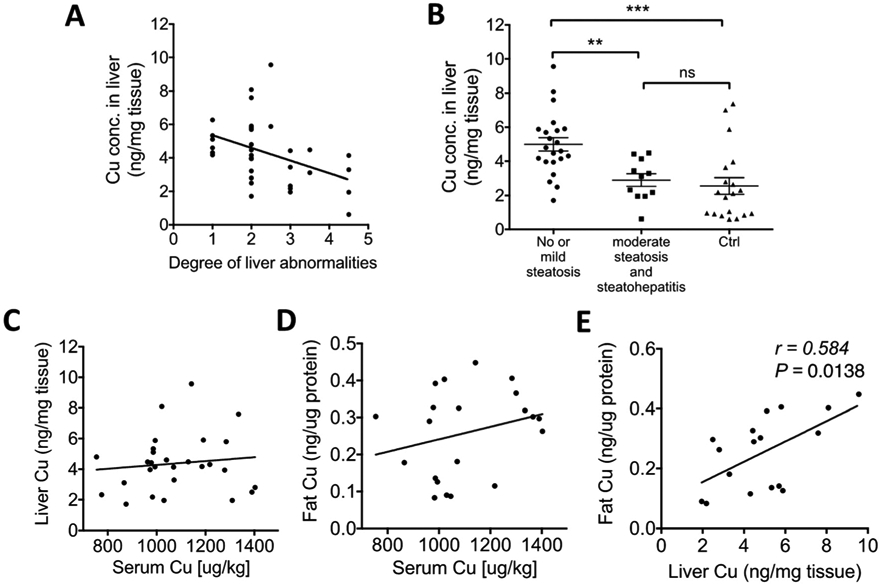Fig. 6.

Hepatic Cu is higher in obese patients and positively correlates with Cu in adipose tissue. (A) Hepatic Cu levels grouped based on the degree of liver abnormalities: (1) no steatosis and no fibrosis, (2) mild steatosis and no fibrosis, (2.5) mild steatosis and mild fibrosis, (3) moderate steatosis and no fibrosis, (3.5) moderate steatosis and fibrosis, and (4.5) mild steatohepatitis with fibrosis. (B) Cu levels in the liver of lean controls and obese patients. (C) Hepatic Cu levels are plotted against serum Cu levels (p > 0.05). (D) Cu concentration in adipose tissue (fat) is plotted against serum Cu concentration (p > 0.05). (E) Adipose Cu levels (per protein) are plotted against liver Cu levels (per protein). (A and C–E, Pearson’s r and p values were calculated by using a linear regression analysis. Student’s t-test, **p < 0.01, *p < 0.05. The data are presented as mean ± SEM.)
